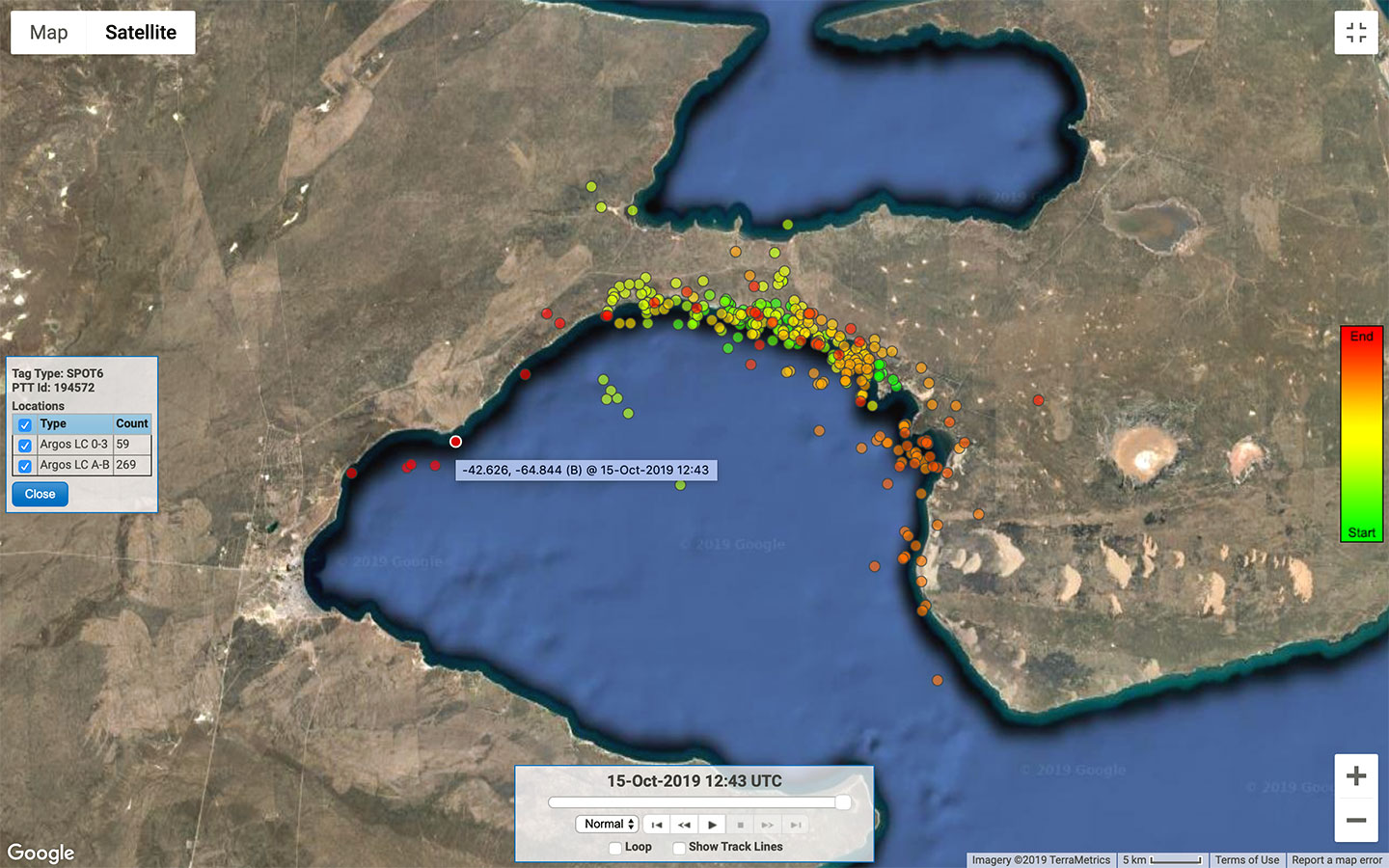Photo: N. Lewin
Tempranera’s 68 day tracking route (3,907 km)
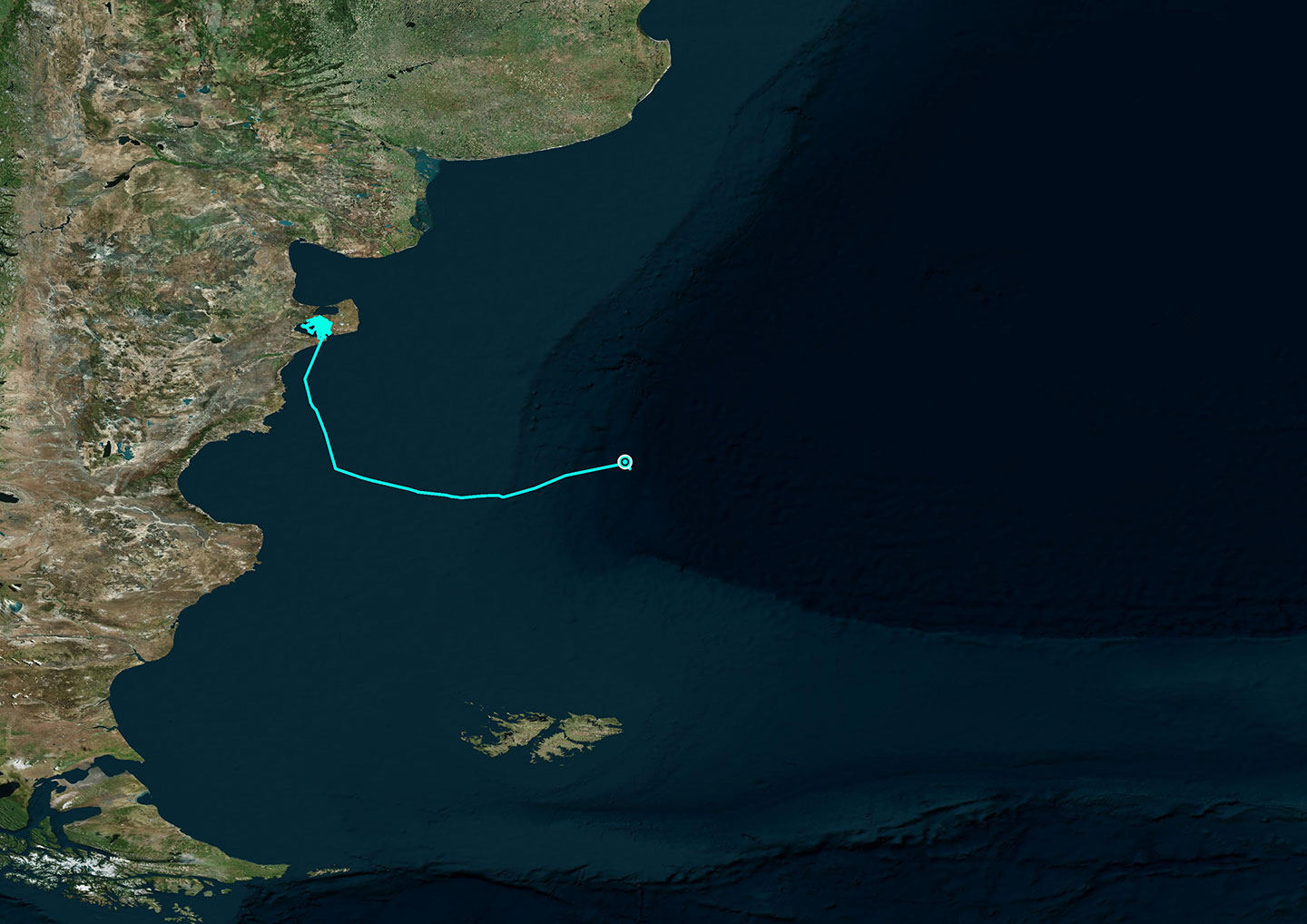
November 26 – November 30, 2019
After traveling south to the latitude of Golfo San Jorge, Tempranera and her calf turned 90 degrees and traveled East. Sadly her satellite tag stopped transmitting on December 1st, when she was close to the area known as “Blue Hole”.
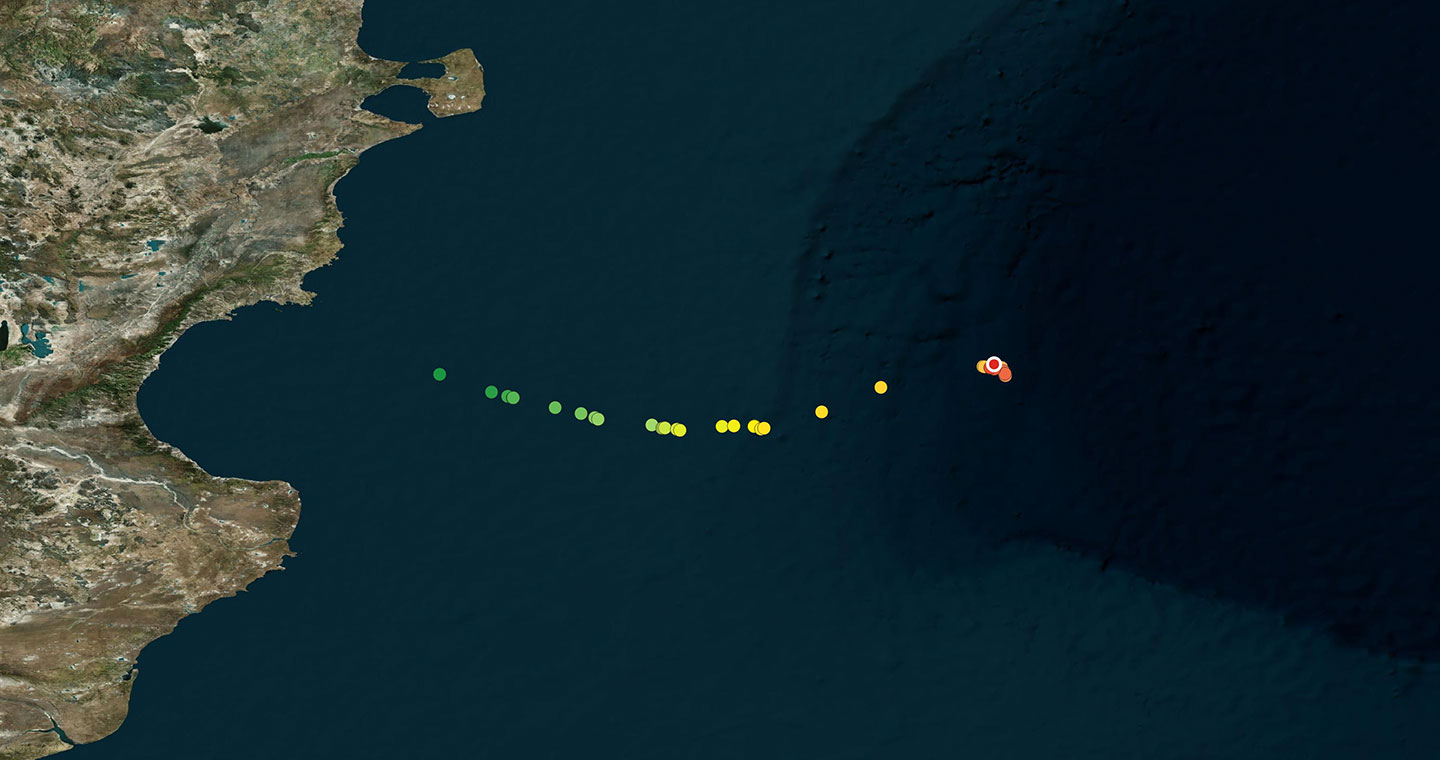
November 17 – November 25, 2019
After various excursions around the eastern section of the gulf, Tempranera and her calf decided to leave the gulf. They left two days ago, traveling southwards very rapidly for 240 kilometers. At present they are off the coast of Golfo San Jorge.
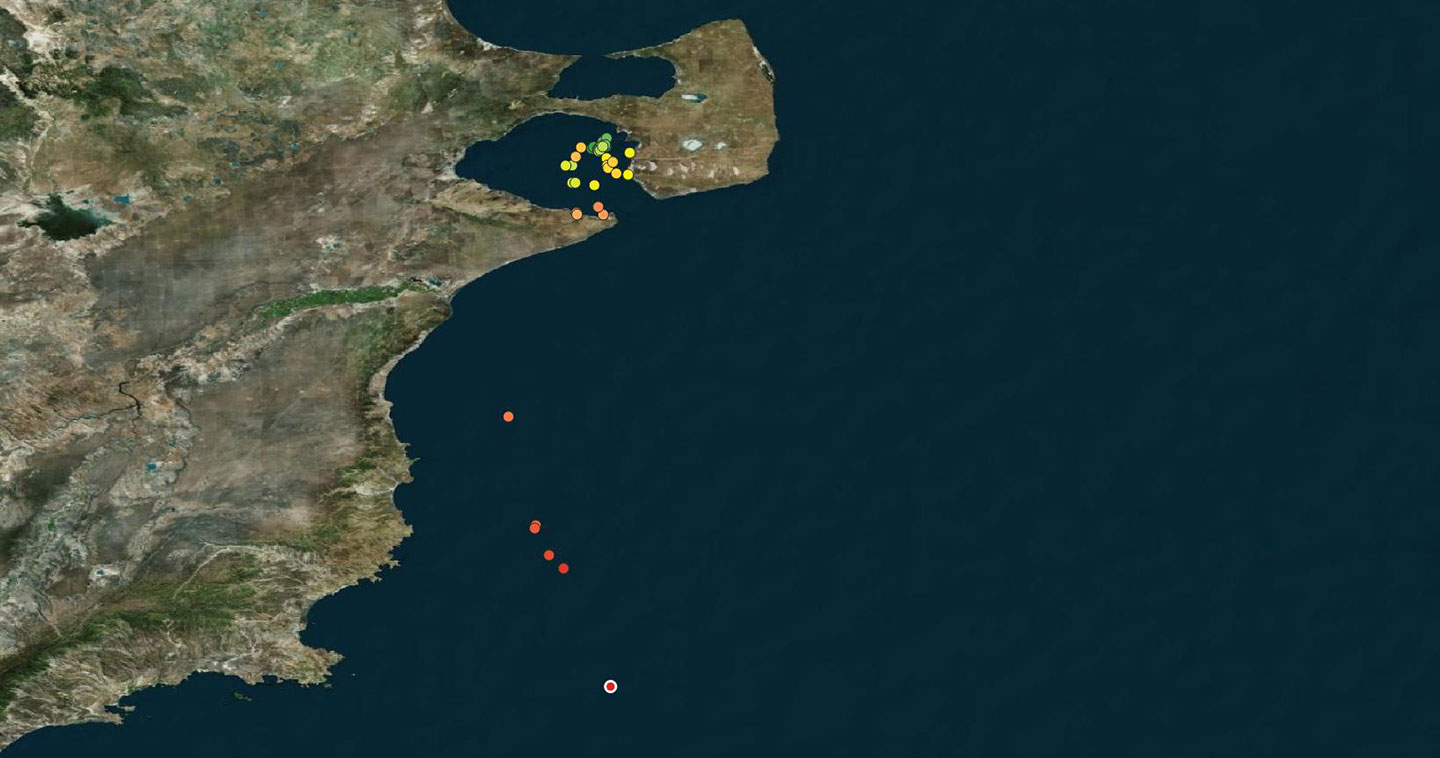
November 10 – November 16, 2019
During this past week Tempranera and her calf swam in the center of Golfo Nuevo and then returned to the zone of Punta Cormoranes. They are once more close to the mouth of the gulf.
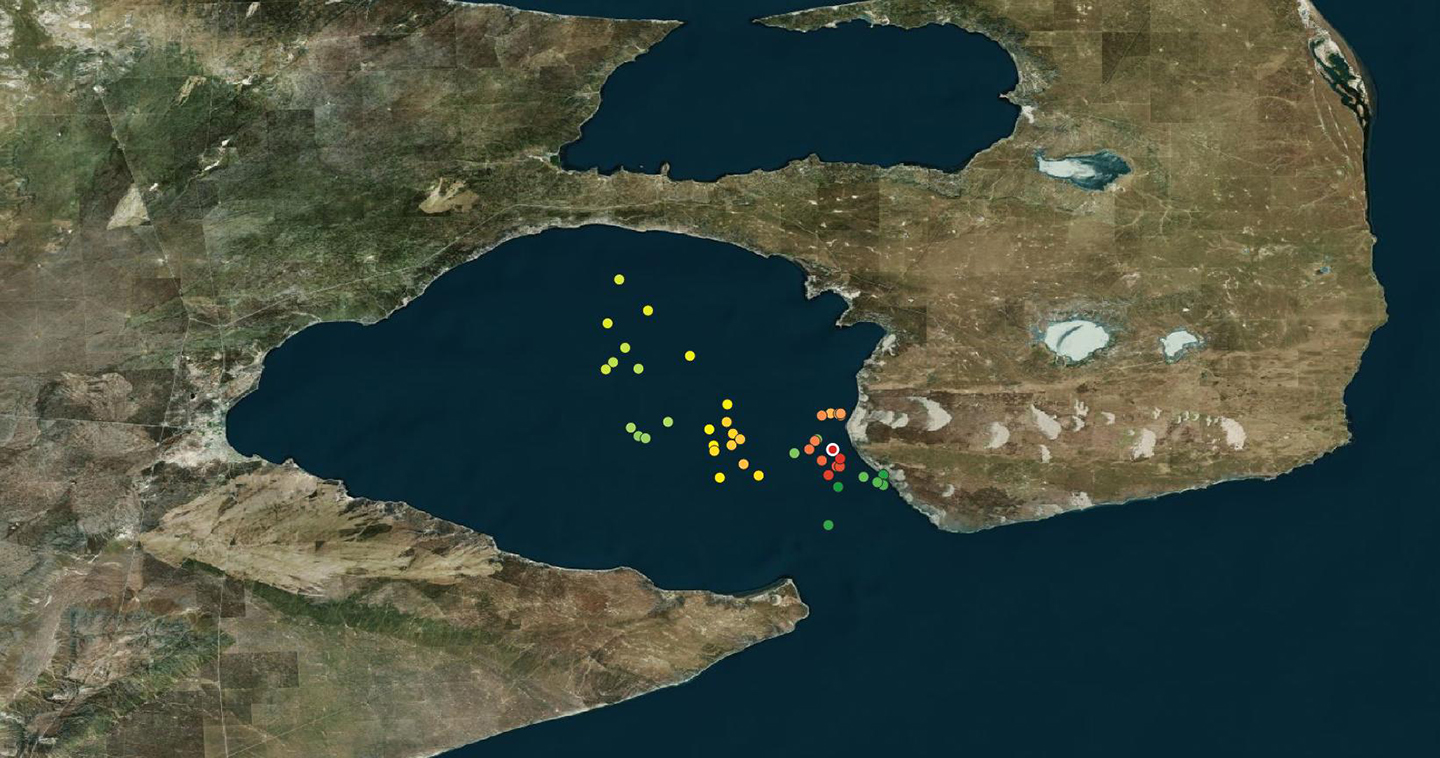
November 2 – November 9, 2019
Tempranera remains in the protected waters where she came to have her calf. This week she and her calf traveled along the coast and the slightly deeper waters to the east, very close to the entrance to Golfo Nuevo. Perhaps they are ready to leave the gulf.

October 27 – November 1, 2019
Tempranera continues in Golfo Nuevo with her calf. A good part of this week they spent in deeper waters inside the gulf, where whales are frequently seen making prolonged immersions of 15 minutes or longer. The tracking team observed them a few days ago.
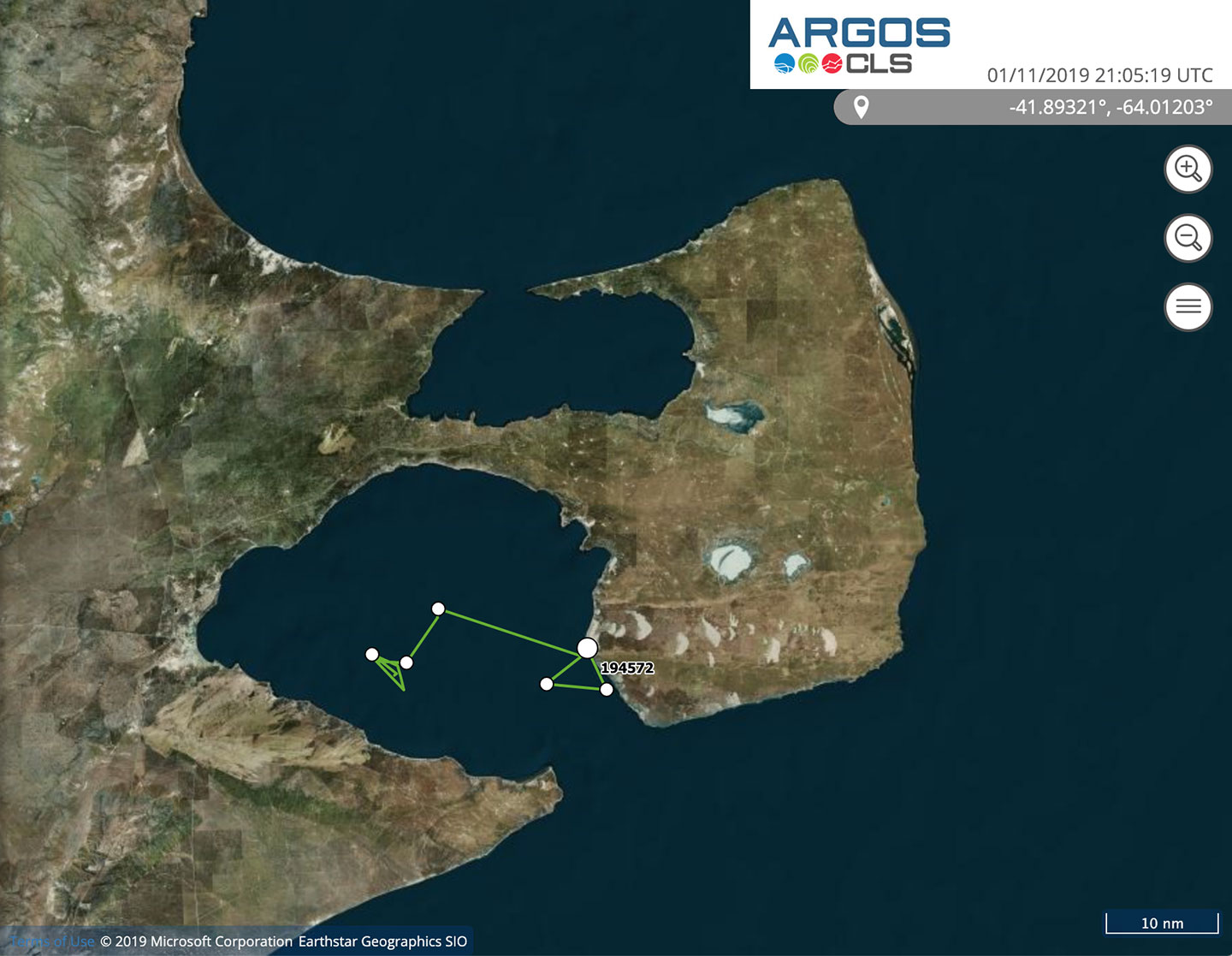
October 16 – October 26, 2019
This female continues traveling around inside Golfo Nuevo. Mothers remain for months in the protected waters of the northern Patagonian gulfs until their calves are strong enough to face the open ocean.
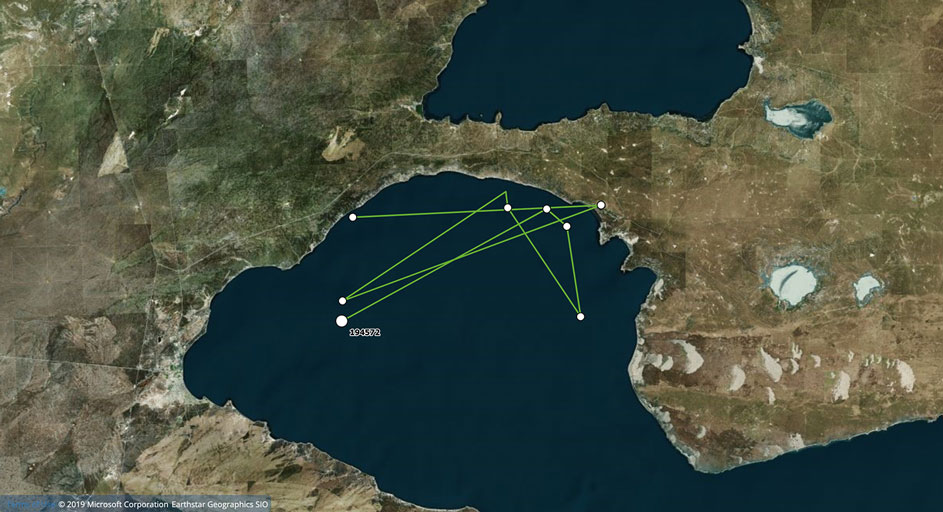
September 24 – October 15, 2019
This adult female is still inside Golfo Nuevo, she was located most recently close to El Doradillo. Each year flights are made to estimate the right whale populations in Golfo Nuevo and Golfo San José. In addition, the whales are also counted from the coast. These studies have now been carried out for 50 years, and are important in monitoring this whale population and also to its conservation.
